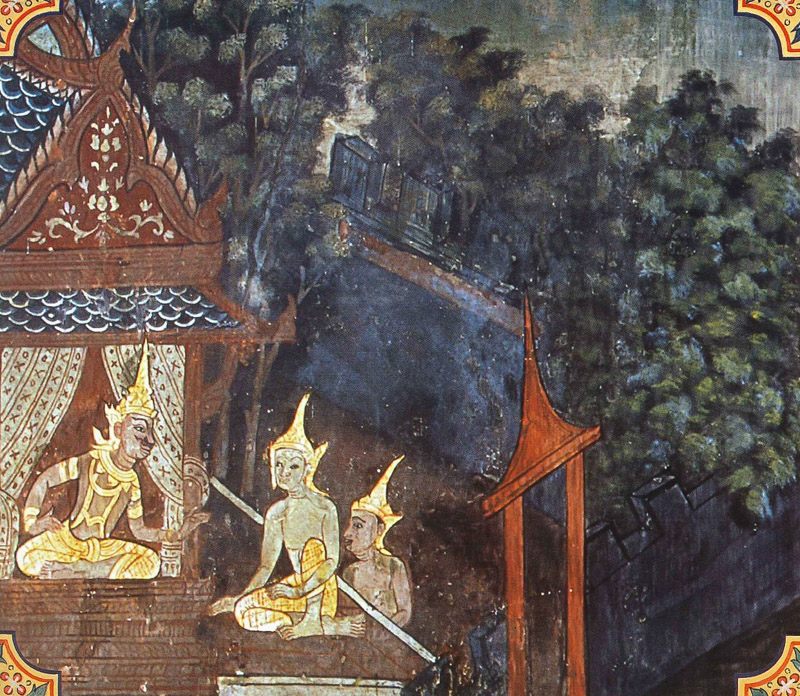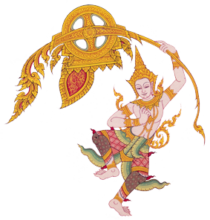
The Bodhisatta was once an ascetic who had five hundred followers studying with him in the Himalayas. One time they went down to a city to get salt and seasoning, and they resided under a banyan tree by the north gate. When half a moon had passed, another band of ascetics arrived and took up abode under a banyan tree at the south gate. Not long after, they all returned to the wilderness.
Both bands of ascetics returned to the city the next year. The other group came first this time, and when they found that the tree by the south gate had died, they made their camp under the northern tree. When the Bodhisatta arrived, he went to what he considered his tree and demanded the other ascetics leave. The two bands quarreled and, when unable to resolve things themselves, went to the king who listened to both sides and granted the space to the ascetics who had come first.
The Bodhisatta’s band did not want to lose out to the others, so they found the body of a splendid chariot and gave it to the king. He took their bribe, and then ordered that both bands stay there together. The other ascetics responded by giving the king the chariot’s jeweled wheels, and he changed his mind again, ordering the Bodhisatta to leave. By this point, both bands of ascetics grew ashamed of their immoral behavior and they all returned home. This made the spirits who lived in the kingdom angry with the king, so they summoned the sea and flooded the kingdom. Because their king was wicked, all the citizens died.
In the Lifetime of the Buddha
The Buddha and his disciples were so highly respected that other religious teachers lost many of their followers. Concerned about their decline, leaders of other sects held a secret meeting to discuss the matter. They felt that the reason for the Buddha’s success was that his monastery was in the best location, so they decided to work together and make a rival settlement next to it. Knowing there would be opposition to this plan, they gave the king one hundred thousand coins and told him that if the Buddha complained, he should avoid answering. The greedy king readily agreed.
Once construction began, the Buddha sent some of his disciples to tell the king that these men were noisy and it was not appropriate for their monastery to be built there. But the king twice sent his servants to the palace door saying the king was not there. Assuming a bribe had been paid, on the third day the Buddha went to the palace himself, and the king could not resist giving him alms. The Buddha told the king this story as a message about the evils and risks of taking bribes and creating conflict. The king repented and sent some of his men to destroy the rival settlement.
The Buddha did not identify any earlier births other than his own.
